When attending a funeral, your clothing should reflect the solemnity and respect the occasion deserves. To prepare for this life’s one of the most meaningful moments, it’s understandable how important it is to choose a funeral suit that’s both appropriate and dignified. In this article, we’ll walk through the most respectful suits to wear to a funeral, from classic cuts to proper color choices, to help you dress with care, confidence, and compassion.
1. What is a funeral suit?
A funeral suit is an understated and formal suit, traditionally worn to a funeral or memorial service. Unlike suits designed for business or celebratory occasions, a funeral suit is meant to convey respect, humility, and solidarity with those grieving.
It typically features a classic, dark color, which most commonly is black, and is styled in a simple, elegant manner without flashy patterns or bold accessories.
The purpose of a funeral suit isn’t to draw attention, but to blend seamlessly into the solemnity of the event, allowing your presence to speak through quiet dignity. Whether tailored or off-the-rack, the right funeral suit should reflect sensitivity to the moment while maintaining timeless style.
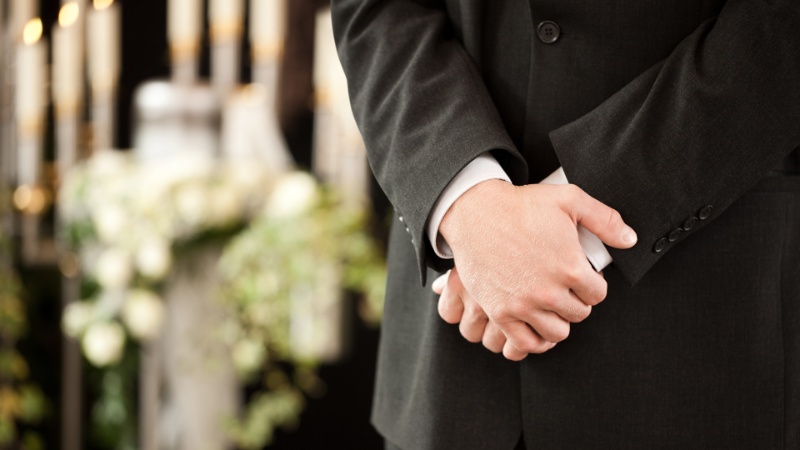
2. Appropriate colors for funeral suits
When selecting a suit to wear to a funeral, the color you choose plays a deeply symbolic and important role in expressing respect, reverence, and emotional sensitivity.
Traditionally, black has been the gold standard for funeral attire across many cultures and religions. A black suit communicates solemnity, humility, and mourning. Its timeless association with loss and remembrance makes it the most universally accepted and appropriate choice for a funeral suit, especially in formal or religious services.
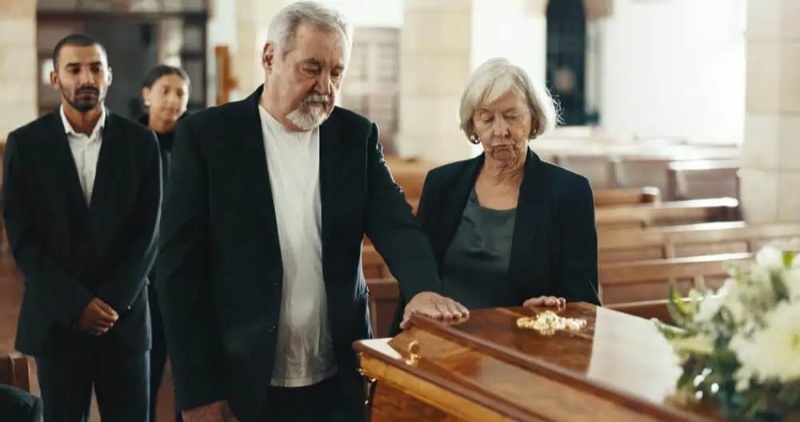
However, modern practices have evolved slightly, and there is now a broader acceptance of other dark, muted tones, especially when black is not available or culturally required.
Charcoal grey, deep navy, and graphite are all excellent alternatives that preserve the dignity and seriousness of the occasion while offering subtle variation. These colors still convey a sense of formality and mourning, and they allow the wearer to pay their respects without appearing informal or out of place.
In some cases, particularly in warmer climates or less traditional ceremonies, a very dark brown or earth tone may also be acceptable, though it should still lean toward conservative styling.
What should always be avoided are bright colors, pastels, or any hues that attract attention rather than show quiet support. Light blues, beige, olive green, or tan, even when part of a stylish suit, can appear tone-deaf or distracting at a funeral.
The same applies to loud patterns, shiny fabrics, or suits with overly trendy cuts. A funeral is not a place for self-expression through fashion; it is a time for reverence, unity, and support.
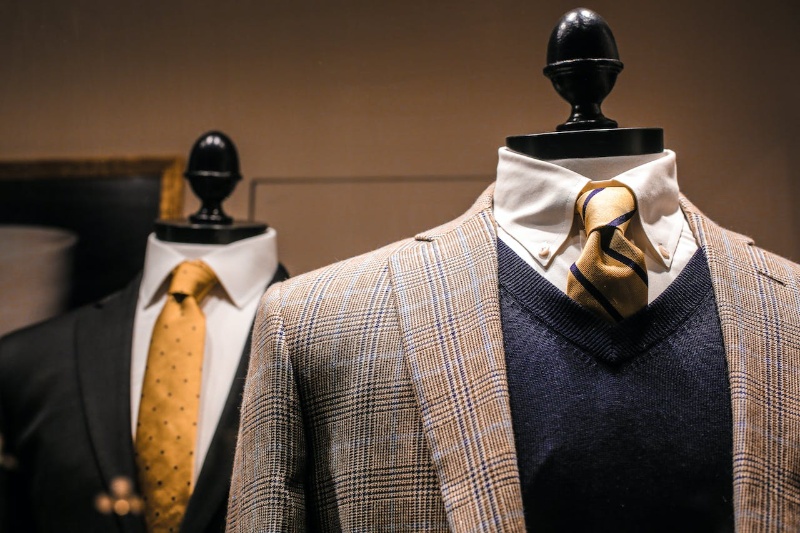
3. Best styles of suits to wear to a funeral
When it comes to choosing the best types of suits for a funeral, simplicity and subtlety are key. A classic two-piece suit consisting of a jacket and matching trousers is the most appropriate and widely accepted style for a funeral. It offers just the right amount of formality without appearing overly dressed.
Between single-breasted and double-breasted suit designs, the single-breasted suit is generally preferred due to its understated elegance and ease of wear.
As for the fit, both slim-fit and classic-fit suits are acceptable, but it’s important that the suit is not too tight or too flashy. Comfort and modesty should guide your choice.

Some may wonder whether a three-piece suit is suitable for a funeral. While it can be appropriate in more formal settings, especially if the vest matches the suit and the overall look remains conservative, it’s not a requirement.
In most cases, a well-fitted two-piece suit in a dark color will serve you perfectly, striking the right tone of respect and refinement.

4. What to wear with a funeral suit
Start with the shirt
A clean, well-pressed white dress shirt is the most appropriate and traditional option. White communicates purity and simplicity, both of which align with the solemn tone of a funeral.
If white is unavailable, a very pale grey or soft blue shirt may be acceptable, but the fabric should be free of patterns, sheen, or contrast stitching.
Avoid bold colors or stripes entirely, as they can appear distracting or disrespectful in a mourning setting.

The necktie
This part is just as important. A solid black tie remains the gold standard to wear with a funeral suit because of its simple, dignified, and timeless appearance.
If you don’t have a black tie, a dark, muted tone such as navy, charcoal, or deep burgundy may be acceptable, so long as it’s not patterned, shiny, or brightly colored. This is not the time for personality through style; rather, it’s about quietly honoring the person who has passed.
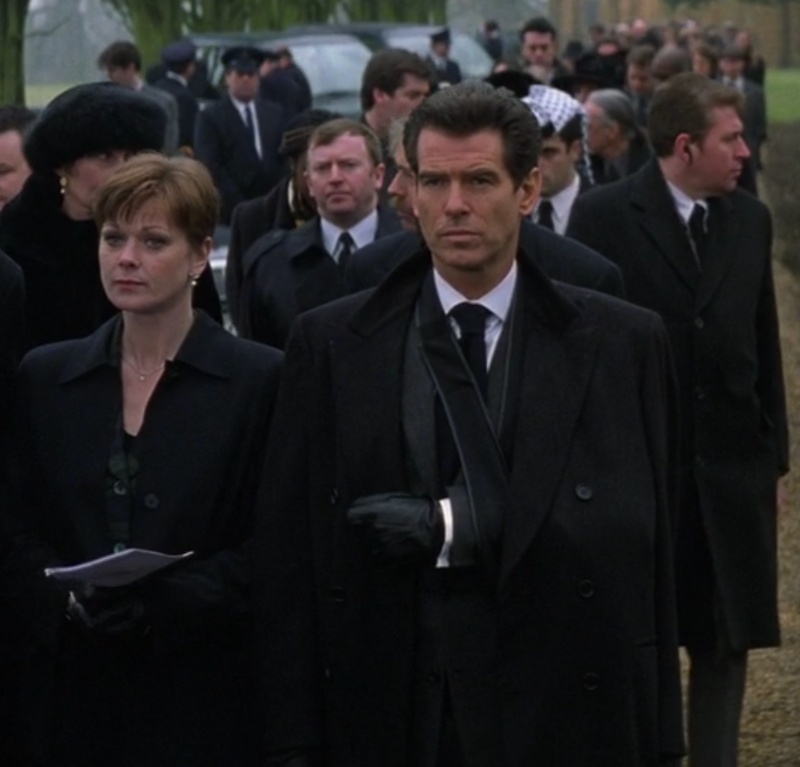
The footwear
Shoes should also match the tone of the event. Choose black leather shoes, preferably classic styles like Oxford or Derby. They should be polished but not overly glossy.
Loafers, brogues, or monk straps can be acceptable in more modern or casual services, but stick to simple designs with minimal detailing. Dark socks that match your trousers—typically black or dark grey—are a must, avoiding white or any novelty prints.
Accessories
Accessories should be minimal and refined. A slim black leather belt that matches your shoes will help complete the outfit without standing out. Avoid flashy watches, colorful pocket squares, lapel pins, or jewelry.
If you wear a pocket square, opt for a plain white square, folded flat without flair. Cufflinks should be simple, small, and in silver or black. Nothing decorative or eye-catching.
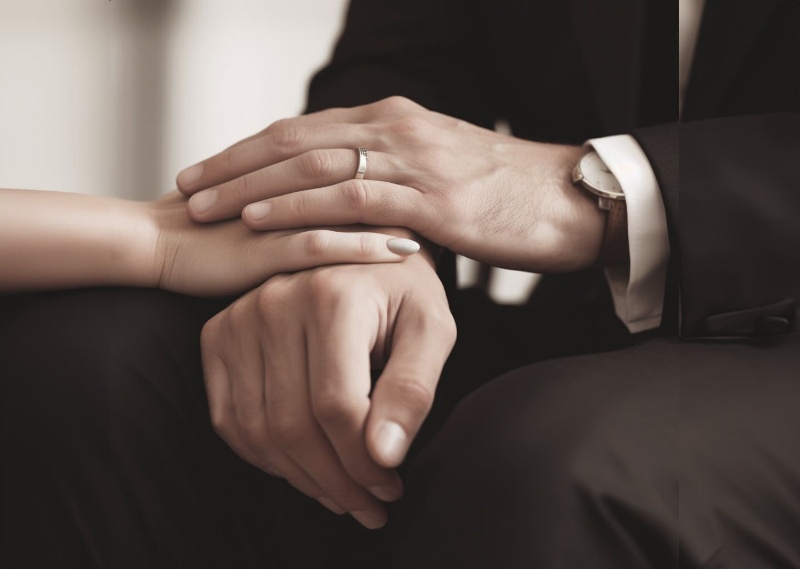
5. Funeral suit etiquette: Do’s and Don’ts
Do’s
Do dress modestly and simply: The purpose of your funeral suit is not to draw attention to yourself but to honor the memory of the deceased. Stick to classic, understated styles that allow you to blend in respectfully.
Do wear a well-fitted suit: Proper fit is important to ensure you look polished without appearing overly stiff or uncomfortable. A tailored suit in a dark, muted color, such as black, charcoal, or navy, is always the best option.
Do button your jacket: If you’re wearing a jacket, always button it while standing. This is a sign of respect and formality. If the jacket has two buttons, leave the top one undone for comfort when sitting.
Do show respect through body language: Aside from your attire, your demeanor matters just as much. Maintain a composed and respectful posture, and avoid distractions, such as using your phone or talking loudly.

Don’ts
Don’t wear flashy patterns or bright colors: Avoid suits with noticeable patterns, bold colors, or anything that might distract from the occasion. A funeral is not the time for fashion statements, so refrain from choosing suits with checks, stripes, or bright hues.
Don’t wear a suit that’s too casual: A suit should always look formal. Avoid opting for a suit with casual elements like too many pockets, unusual fabrics, or unpolished shoes. Avoid any lounge suit and stick with a classic, professional look.
Don’t leave your suit jacket unbuttoned: While some may find it comfortable to leave the jacket unbuttoned, it can appear too casual at a funeral. Always button your jacket, particularly when standing or interacting with others.
Don’t wear excessive accessories: Keep accessories to a minimum. Avoid flashy jewelry, bright cufflinks, or bold pocket squares. A simple black tie and a plain white pocket square, if you choose to wear one, are sufficient to maintain respect and decorum.
A funeral is a moment to honor, remember, and show respect, and what you wear should reflect that sentiment with quiet dignity. Choosing the right funeral suit isn’t about standing out, but about blending grace and tradition in a way that supports the occasion. From dark, well-fitted garments to subtle, respectful details, the right suit to wear to a funeral can offer a sense of composure during a difficult time.
Create from my passion about sartorial that I accidently discover when I was searching to upgrade my style, this website is dedicated to providing in-depth knowledge, expert styling tips and the latest trends in men’s tailored fashion. Though sometimes I might sound a little cheesy cuz of all that philosophy book I’ve read 🙂
